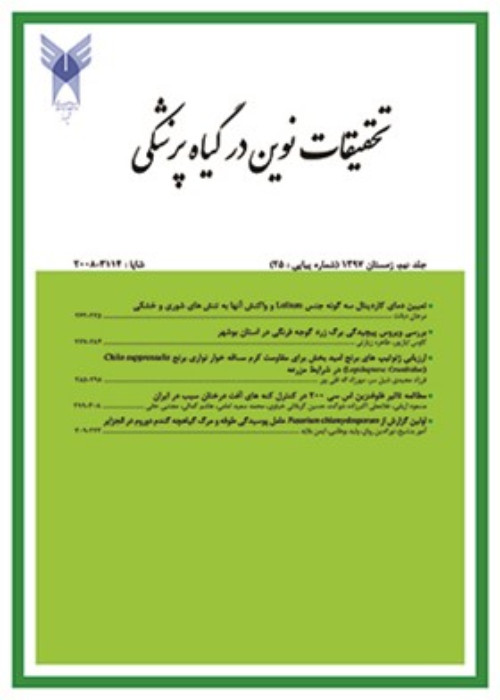Studies on fungistatic effects of some fungicides on growth of Alternaria alternata and A. solani
Author(s):
Abstract:
Early blight is an important and ubiquitous disease which attacks many herbaceous plants Specially Solanaceae family. Already this disease threaten the potato fields In Iran. The experiments were conducted in order to study the effects of rovral, Chlrotalonil, Mancozeb fungicides in 1 ppm against flint in 1, 2, 5, 10 ppm on different culture media, including PDA and CMA for two species Alternaria alternata & Alternaria solani. The result indicated that, all of tested fungicides could prevent the growth of two species with the various levels, as far as the growth rates are concerned. Also flint fungicide in various concentrations, 1,2, 5, 10, 20, 50, 10, 200, 500 and 1000 ppm indicated that it could effectively inhibit the growth of two fungal species, as the dosages are increased, indicating the reductions in the growth correspondingly. The highest inhibitions were flint 500 and 1000 ppm and the lowest in flint 1 ppm. This fungicides had a very significant effects on the sporulation of A. alternate, indicated that, with the increased in fungicides concentrations, the sporogenesis decreased, in which the highest sporulation was in Mancozeb treatment and the lowest was in flint with 1000 ppm Also, the results indicated, that the fungicides had effective reductions on the dry and wet mycelial growth weights on zapeks culture media, where the highest wet weights were observed in Mancozeb fungicide, and the lowest was in flint, 1000 ppm.
Keywords:
Language:
Persian
Published:
Journal of Novel Researches on Plant Protection, Volume:2 Issue: 4, 2012
Page:
311
https://magiran.com/p1105077


